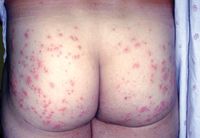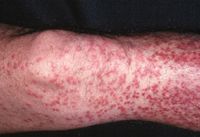- Case-Based Roundtable
- General Dermatology
- Eczema
- Chronic Hand Eczema
- Alopecia
- Aesthetics
- Vitiligo
- COVID-19
- Actinic Keratosis
- Precision Medicine and Biologics
- Rare Disease
- Wound Care
- Rosacea
- Psoriasis
- Psoriatic Arthritis
- Atopic Dermatitis
- Melasma
- NP and PA
- Skin Cancer
- Hidradenitis Suppurativa
- Drug Watch
- Pigmentary Disorders
- Acne
- Pediatric Dermatology
- Practice Management
- Prurigo Nodularis
- Buy-and-Bill
Article
Elemental worries: Exposure to sun, water, altitude puts athletes at risk for skin damage
Environmental elements can increase risks for sun damage, particularly for athletes who spend extended periods outdoors. Athletes should protect themselves by wearing waterproof sunscreens with a very high sun protection factor number, such as SFP 50 and above. Wearing protective clothing is another precautionary measure that athletes can take.

Key Points
Tucson, Ariz. - Prolonged exposure to outdoor elements, such as the sun, can cause environmental insult to the skin for cyclists, golfers hikers and other athletes, says a dermatologist in private practice in Tucson, Ariz.

Dr. Levine says dermatologists need to tell their patients to wear sunscreen that will stay on and not break down, noting that many sunscreens do break down after a number of hours.
Many individuals are loath to lather on a thick coat of sunscreen, because it will be messy and perhaps greasy, he says.
Some sunscreens have a very high sun protection factor (SPF) number, such as 50 and above, and provide enhanced protection for athletes, Dr. Levine says.
Wearing a thin coat of sunscreen without a high SPF number will likely not provide sufficient protection for athletes.
Outdoor enthusiasts put themselves at greater risk of developing melanoma and other skin cancers if their recreation exposes them to increased UV radiation in summer sports and reflection from snow- and ice-covered surfaces in alpine sports.
Competitive athletes can sustain extreme UV exposure in sports such as skiing, mountaineering, or cycling, or if they participate in triathalons. Taking precautionary measures, including wearing protective clothing, will reduce UV exposure.
If athletes are swimming, they will need to reapply sunscreen, since it will more than likely be washed off, Dr. Levine says.
They should also be counselled to wear a water-resistant sunscreen.
Swimmer issues

"If there is not a correct pH balance in the pool, it can turn hair color green," Dr. Levine tells Dermatology Times.
"People think that the change in hair color is a result of chlorine, but it's not the chlorine that is doing that," he says.

"If people have a condition like atopic dermatitis, it is important that they apply moisturizer to their skin after being in the water," Dr. Levine says.
When an athlete swims in lakes or oceans, salt water or fresh water, parasites can enter the skin and cause swimmer's itch or sea bather's eruption, according to Dr. Levine. He says when ducks are present on the lake, they can carry a parasite and increase the likelihood of swimmers developing swimmer's itch.





